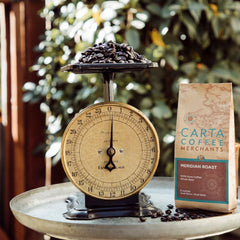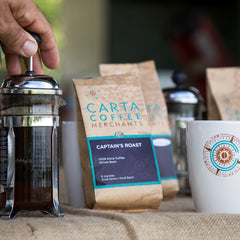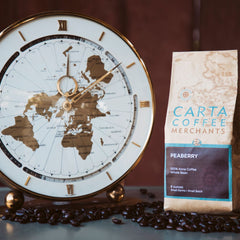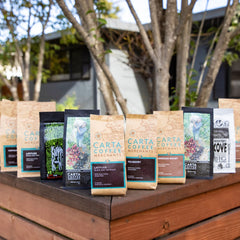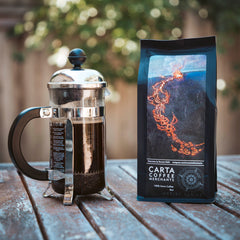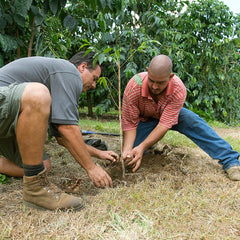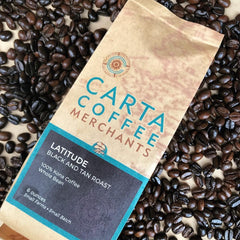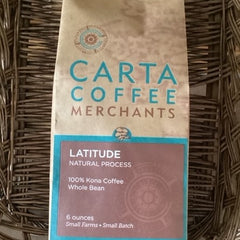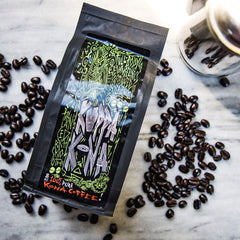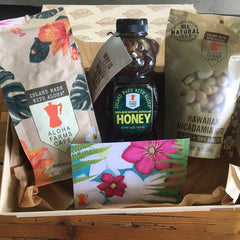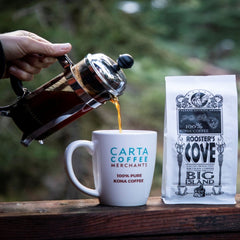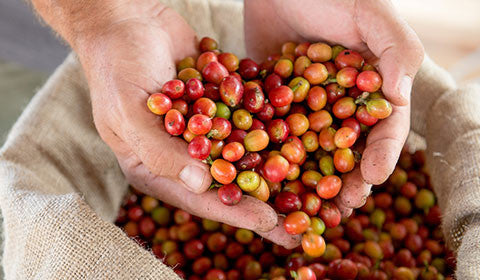Posted on

For billions around the world, coffee isn’t just part of our daily routine. It’s also an ingrained part of many cultures for both coffee drinkers and the people dedicated to harvesting it. In fact, it’s the second most sought-after commodity on Earth, just after crude oil. This demand only increases the overall impact coffee production has on our planet and those working hard to provide us that fresh cup every morning.
However, our relationship with coffee has evolved alongside this modern always-on-the-go way of life. Our need to squeeze in a cup as we scramble from meeting to meeting—as well as a desire for the best price—has led to an increasingly wasteful coffee culture.
Thankfully, with this realization has come solutions to create a more sustainable brew. So how we do our part to keep coffee production sustainable? First, let’s talk about what sustainable coffee actually looks like.
What Is Sustainable Coffee?
When saying the words “sustainable coffee,” most people assume you’re talking about the environment—keeping things green, minimizing the use of resources, reusing things whenever possible, etc. While that’s definitely part of it, it’s not the whole story.
Since coffee is one of the most mass-produced products in the world, responsible producers must keep the environment in mind. This includes sustainable practices such as shade growing, biodiversification, and organic farming. These are basic ways to keep production in sync with the surrounding environment.
However, because of coffee’s mass market, millions of workers worldwide are necessary to get the yields needed. As a result, a big part of what’s considered sustainable practice involves the treatment of employees, working conditions, and educational and community development. Some companies even give substantial proceeds of their sales back to their worker’s communities further supporting the people who make their business possible.
By purchasing from companies that promote these practices, we’re giving back to those working hard to provide us this simple pleasure. And of course, it’s becoming more essential every day to mind our carbon footprint and consider how our choices affect future generations.
How to Find Sustainable Coffee
At this point you might be saying to yourself, “Great ideas, but this seems like a lot of work.” Even with our best intentions, few people have the time to deeply research the sustainability habits of every brand. Luckily, finding sustainable coffee is a lot easier than you think.
When looking for greener coffee brands, search for their certifications which can be found on the packaging or their websites. Below are the most common certifications to keep an eye out for.
Organic
Qualifying to become certified organic means that all growing and production was done in a “green” fashion without artificial pesticides, additives, or chemicals. Producers also allow for the surrounding environment to thrive as naturally as possible.
Fair Trade Certified
This is the certification that tells you how employee-friendly the company is. If they have this, it means they pay their employees fair wages, provide excellent conditions, and make their worker’s communities and overall well-being a priority.
Rainforest Alliance
The Rainforest Alliance certification combines organic and fair-trade certifications and takes it to the next level. If a company can prove the integration of biodiversity, productive agricultural practices, and provide above-and-beyond support for their farmers and their right’s, they can be eligible for this certification.
Smithsonian Bird-Friendly Certification
Bird habitats are especially sensitive. Coffee companies which conduct research and provide education about how their production impacts local and migrating bird populations can earn this certification. With growing methods such as shade growing, many coffee producers are taking extra care in creating a symbiotic relationship with bird’s habitats.
Utz Certified
The Utz certification sets the standard for professionalism and consumer expectations. It’s essentially the ethical seal of approval proving the producer meets a level of professionalism with a focus on sustainability.
Making A Sustainable Cup of Coffee
Now that we know how to find a great sustainable coffee brand, what can we do in our everyday lives to keep our caffeine guzzling habits as sustainable as possible
1. Minimize Paper Cup Usage
Every time you use a paper cup—that’s more waste. And that’s only the cup! Now add the plastic lid, sleeve, straw, and stirrer. Just think of how many products you use weekly and imagine that trash pile building.
There’s one super simple way to solve this issue. Buy a reusable cup or mug! For a small investment, get a nice one like the Contigo Autoseal Stainless Steel Travel Mug, or just bring your favorite mug into work.
2. Skip the Paper Filters
Having to use a paper filter every time you brew a pot of coffee adds up fast. This is an effortless way to cut down that carbon footprint and save yourself some money. Many home coffee brewers now have options with reusable filters. Or start using a French press or other methods that skip the paper.
3. Use Biodegradable K-cups
There’s a heated debate about the pros and cons of the Keurig machine. Many coffee aficionados hate their existence. Others can’t get past Keurig’s waste factor. But for some of us, convenience frankly wins.
But don’t think that using K-Cups means you’re forced to give up on sustainability. It’s trickier, but it is possible. Most importantly, make sure to choose a machine that allows for recyclable or biodegradable K-Cups. Then the amount of excess waste will be significantly diminished and you can enjoy quick coffee guilt-free.
4. Be Mindful of Resources
Last but not least, don’t overuse when making your daily cup. Especially if you have a large pot, it can be easy to make too much which leads to wasted water and product. If you notice that creating too big a pot is a regular occurrence, consider downsizing or looking to other brewing methods like a pour-over or French press.
This also applies when ordering at a coffee shop. If you’re staying at the shop, ask for a reusable mug rather than a to-go cup. If you don’t really need a lid, stirrer, sleeve, straw, etc., skip it. And order the size you can honestly consume to minimize any extra waste.
By taking just a few of these steps, we can start giving back to those farmers, their families, and the environment—all who give so much for our love of coffee.
If you’re looking for a small, sustainability conscious coffee company dedicated to preserving our planet, try Carta Coffee Merchants. We’re proudly devoted to hand-harvesting outstanding beans from our family owned farm in beautiful Kona, Hawaii.

